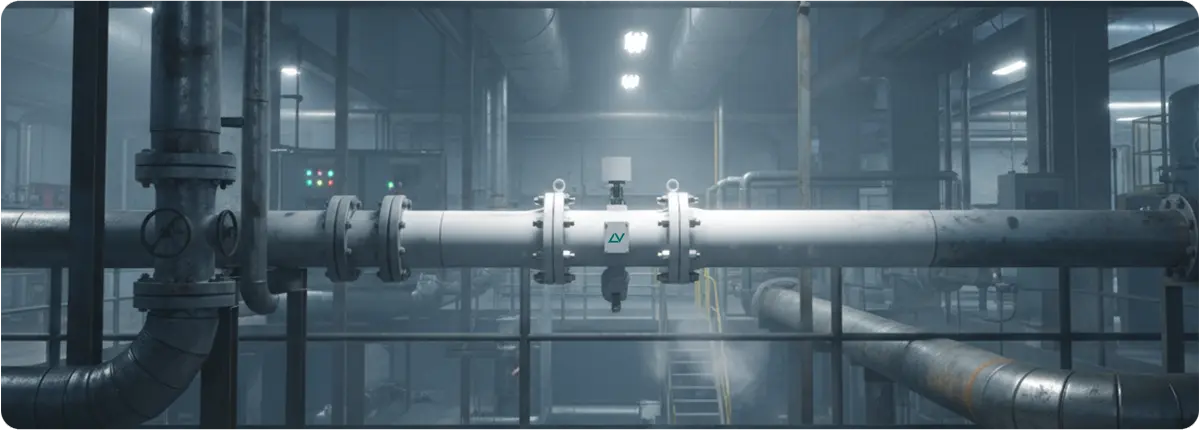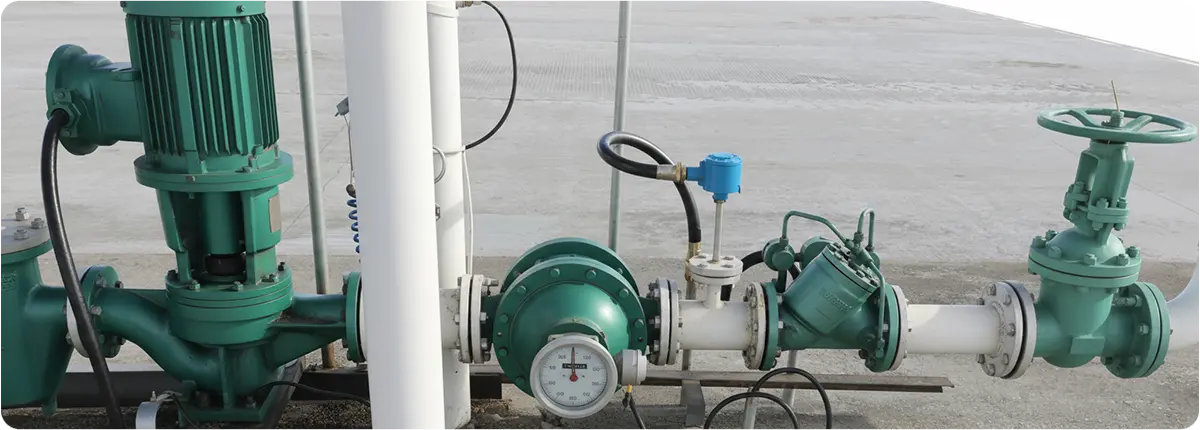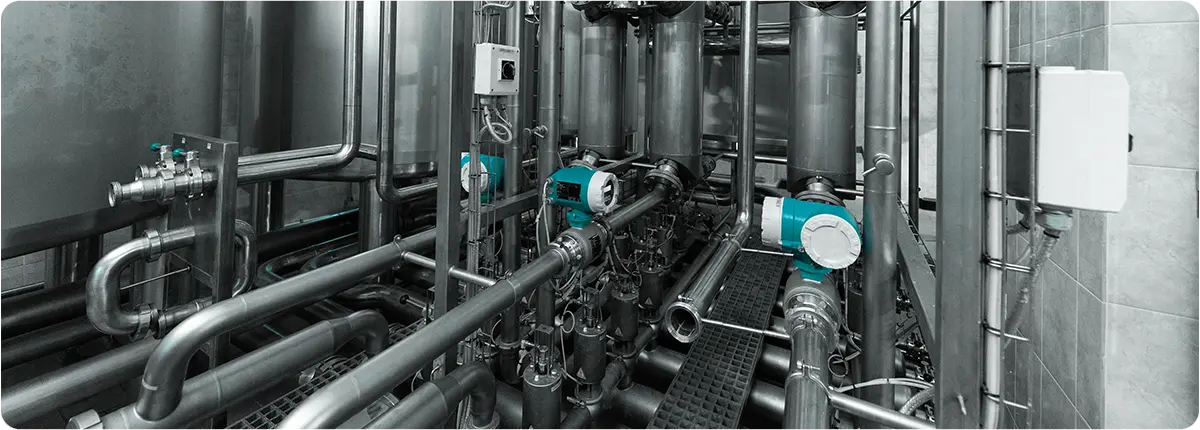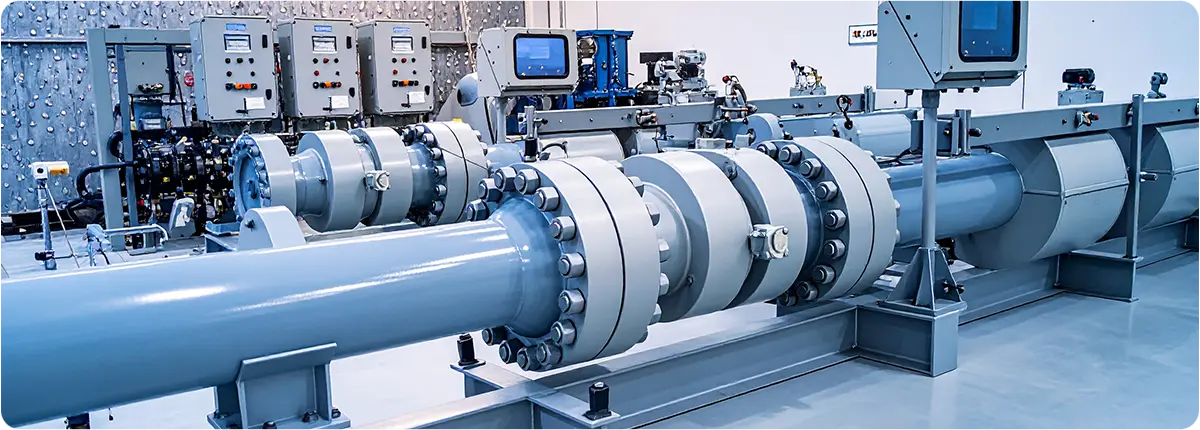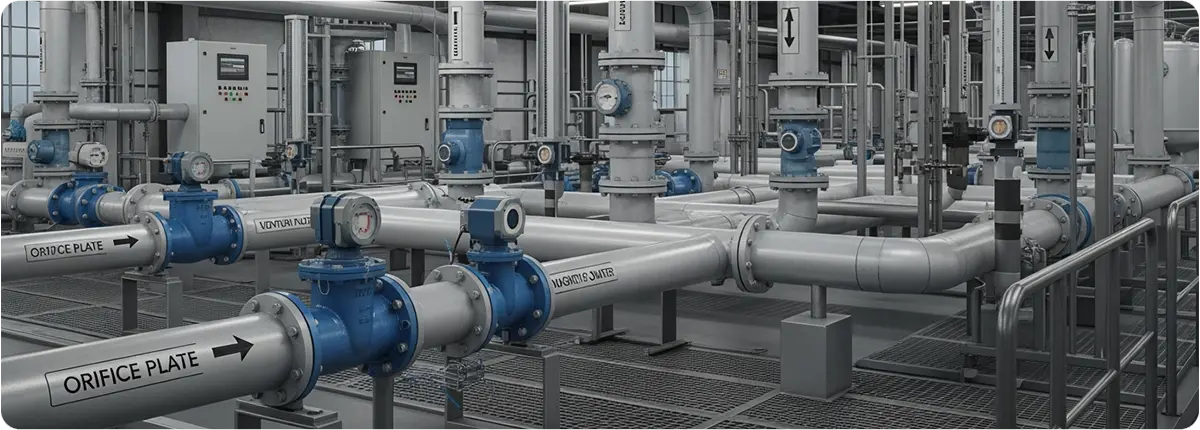Piston flowmeters are positive displacement flowmeters designed to provide high-accuracy measurement. They measure fluid volume through a reciprocating piston mechanism, making them ideal for low flow rates and high-viscosity fluids. Due to their reliability, they are widely used in chemical, pharmaceutical, food, oil, and automotive industries.
WORKING PRINCIPLE
In piston flowmeters, fluid enters a chamber where a piston moves back and forth. Each piston stroke displaces a fixed volume of fluid, which is then counted by mechanical or electronic sensors. The total volumetric flow rate is determined based on the number of cycles.
Basic equation:
Qv = n · Vc
Qv: volumetric flow rate (m³/s)
n: piston stroke frequency (Hz)
Vc: displaced volume per stroke (m³).
This principle ensures high accuracy, even at very low flow rates, and is less sensitive to pressure fluctuations.
STRUCTURAL FEATURES
- Body materials: stainless steel, aluminum, cast iron
- Measuring element: piston-cylinder mechanism
- Output signals: mechanical register, magnetic pickup, pulse output
- High-pressure resistance
- Low pressure drop and high repeatability
ADVANTAGES AND LIMITATIONS
Advantages:
- Very high accuracy (±0.1% – ±0.5%)
- Effective for low flow measurements
- Reliable for viscous fluids
- Durable and long-lasting design
Limitations:
- Maintenance required due to moving parts
- Reduced lifespan with abrasive or particulate fluids
- Limited use in large-diameter pipelines
APPLICATION AREAS
- Solvent, resin, and polymer measurement in chemical industries
- Precise dosing in pharmaceuticals
- Measurement of syrup, honey, and oils in food industry
- Oil and fuel measurement in automotive industry
- Lubrication systems and hydraulic applications in energy sector
STANDARDS AND CALIBRATION
- OIML R 117: International standard for liquid measuring devices
- ISO/IEC 17025: Calibration laboratory accreditation
- ATEX-certified models for explosive environments
- Regular calibration is essential for maintaining accuracy over time
CONCLUSION
Piston flowmeters are highly reliable in low-flow and high-viscosity conditions. They play a critical role in industries requiring precise dosing and accurate volumetric flow measurement.
